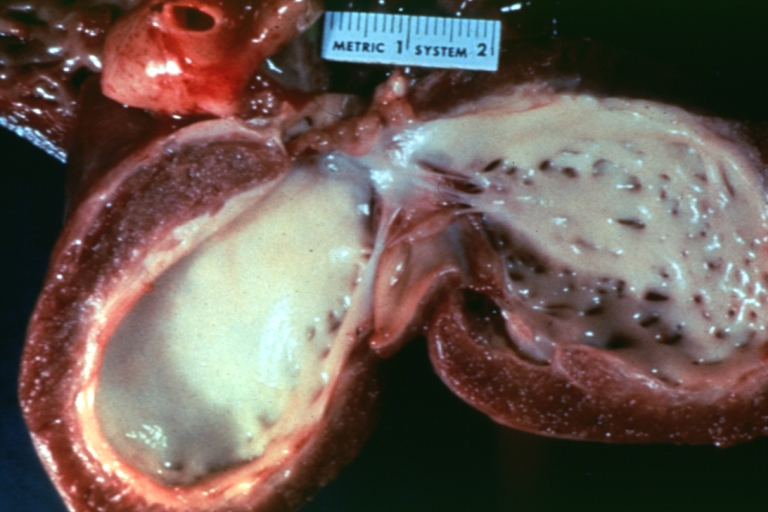Endocardial fibroelastosis
| Endocardial fibroelastosis | |
 | |
|---|---|
| Endocardial fibroelastosis: Gross, an excellent example. Image courtesy of Professor Peter Anderson DVM PhD and published with permission © PEIR, University of Alabama at Birmingham, Department of Pathology |
Editor-In-Chief: C. Michael Gibson, M.S., M.D. [1]
Endocardial fibroelastosis is a rare heart disorder that is characterized by a thickening within the muscular lining of the heart chambers (the endocardium) due to an increase in the amount of supporting connective tissue and elastic fibers. It is an uncommon cause of unexplained heart failure in infants and children. It is one component of HEC syndrome. The term was introduced by Weinberg and Himmelfarb in 1943. [1]
Pathological Findings
Gross Images
-
Endocardial fibroelastosis: Gross, an excellent example
-
Endocardial fibroelastosis: Gross, an excellent example, infarct heart
-
Gross, fixed tissue, good demostrated myocardial scars and marked endocardial thickening. This has been called endocardial fibroelastosis in an adult.
-
Endocardial fibroelastosis: Gross, an example of LV endocardial thickening associated with anomalous origin of left coronary artery from pulmonary artery
References
- ↑ Weinberg T, Himmelfarb AJ: Endocardial fibroelastosis. Bull Johns Hopkins Hosp 1943; 72: 299.


